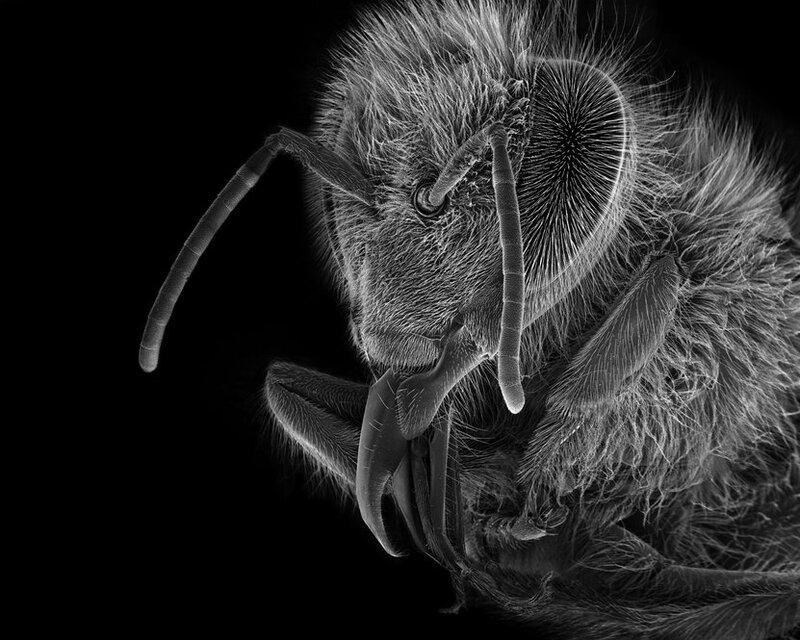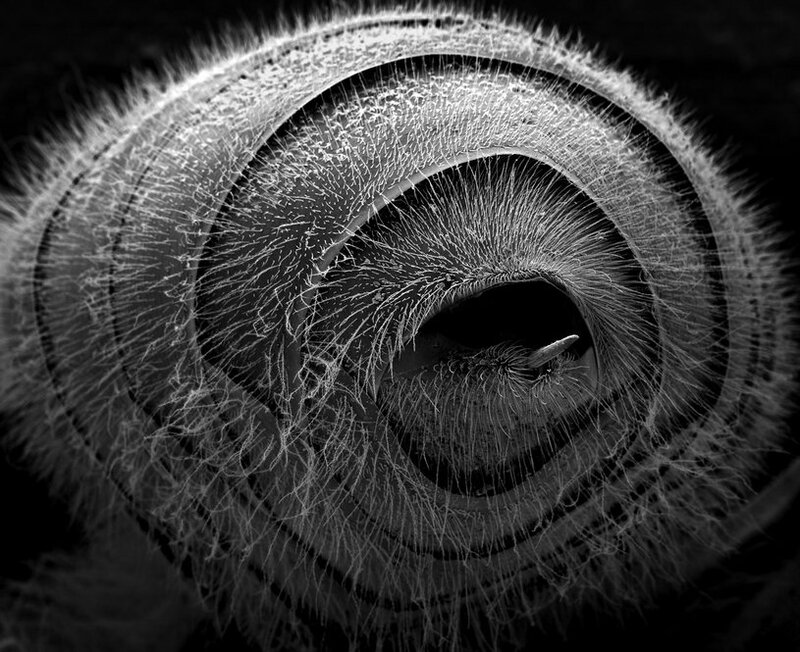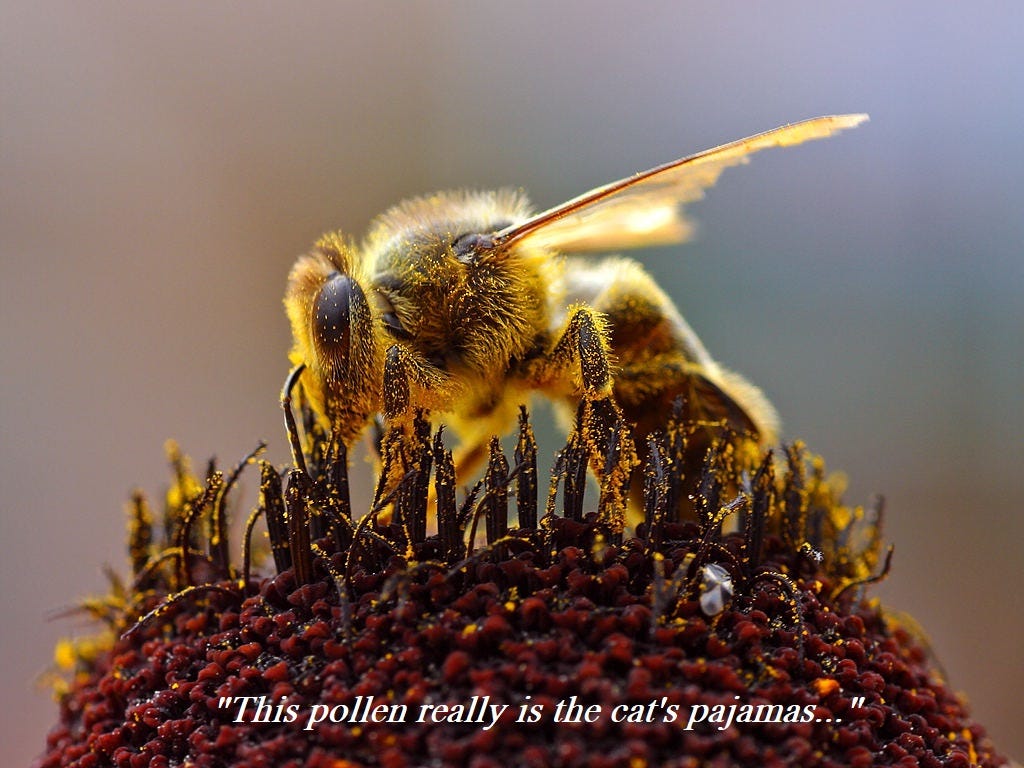
Have you ever wondered how insects are able to accomplish such remarkable feats? From the tiny ants building intricate underground tunnels to the graceful flight of butterflies, these tiny creatures showcase exceptional agility and strength. In this article, we will take a closer look at the fascinating world of insect physiology and explore how their unique anatomy enables them to perform their remarkable behaviors. Prepare to be amazed as we uncover the secrets behind the bee’s knees and delve into the intricacies of these incredible creatures.
Physiology of Insects
Definition and Scope
The field of insect physiology encompasses the study of the physical and biochemical processes that occur within the bodies of insects. It explores the intricate systems that enable insects to carry out essential functions such as feeding, respiration, circulation, reproduction, and sensory perception. By understanding the physiology of insects, scientists gain valuable insights into their unique adaptations and behaviors, highlighting their crucial role in the ecosystem.
Key Components
Insect physiology is composed of various key components that work together to enable insects to thrive in their environment. These components include the external anatomy, internal anatomy, respiratory system, circulatory system, digestive system, nervous system, reproductive system, and the phenomenon of metamorphosis. Each component plays a vital role in the overall physiology of insects and contributes to their remarkable diversity and success.
Importance in the Ecosystem
Insects are essential to the functioning of ecosystems due to their various roles as pollinators, decomposers, and predators. By studying insect physiology, scientists can gain a deeper understanding of how insects interact with their environment and fulfill these crucial ecological functions. Additionally, understanding insect physiology can aid in the development of pest management strategies and the preservation of biodiversity. Insect physiology is, therefore, a critical field of study with far-reaching implications for both ecological and practical applications.
External Anatomy
Exoskeleton
One of the defining features of insects is their exoskeleton, which serves as a protective outer covering and provides structural support for their bodies. The exoskeleton is composed of a tough, flexible material called chitin. This rigid exoskeleton allows insects to resist desiccation, provides protection against predators, and provides a surface for muscle attachment. As insects grow, they need to shed their exoskeleton through a process called molting.
Head
The head of an insect houses essential sensory organs, including a pair of compound eyes for vision and various types of antennae that detect touch, smell, and temperature. It also contains mouthparts adapted for feeding, which can vary greatly depending on the insect’s diet. The head is connected to the thorax, allowing for coordinated movement and the transmission of information between these body segments.
Thorax
The thorax, located between the head and abdomen, is responsible for locomotion in insects. It is divided into three segments: the prothorax, mesothorax, and metathorax. Each segment usually bears a pair of jointed legs, allowing insects to walk, jump, or swim depending on their adaptations. In flying insects, the mesothorax typically bears a pair of wings, enabling them to navigate through the air with great agility.
Abdomen
The abdomen is the posterior body segment of insects and contains various vital organs, including the digestive, reproductive, and excretory systems. It is often more flexible than the thorax, allowing some insects to curl or expand their abdomen as part of defensive behaviors or reproductive processes.
Appendages
Insects possess a variety of appendages that aid in movement, feeding, and sensory perception. In addition to the legs, insect appendages include structures such as antennae, wings, and ovipositors. These appendages have evolved to suit the specific needs and lifestyles of different insect species and play a crucial role in their overall physiology.

This image is property of media.npr.org.
Internal Anatomy
Digestive System
The digestive system of insects is well-adapted to extract nutrients from a wide range of food sources. It typically consists of mouthparts, a digestive tract, and accessory organs. Insects have diverse feeding habits, ranging from herbivory to carnivory, and their mouthparts reflect these adaptations. The digestive tract is responsible for breaking down food into small particles and absorbing nutrients into the circulatory system. Accessory organs, such as salivary glands, help in the lubrication and digestion of food.
Respiratory System
Unlike mammals, insects lack lungs. Instead, insects possess a highly efficient respiratory system that relies on tiny tubes called tracheae. These tracheae carry oxygen directly to the cells through small openings called spiracles, which are strategically located on the insect’s body. The tracheal system facilitates rapid gas exchange, allowing insects to adapt to their varied environments and maintain high metabolic rates.
Circulatory System
Insects have an open circulatory system, where a fluid called hemolymph circulates throughout their body cavity. Hemolymph plays a role in transporting nutrients, hormones, and immune cells throughout the insect’s body. The circulatory system also includes a tubular structure called the heart that pumps hemolymph through a series of vessels, ensuring efficient distribution and exchange of essential substances.
Nervous System
The nervous system of insects is composed of a central nervous system (CNS) and a peripheral nervous system (PNS). The CNS consists of the brain and a ventral nerve cord that runs along the insect’s body. The PNS comprises sensory organs, including compound eyes, antennae, and mechanoreceptors. Insects exhibit remarkable sensory abilities, enabling them to detect and respond to a wide range of environmental cues. The nervous system also allows insects to exhibit complex behaviors, such as mating rituals, territorial defense, and navigation.
Reproductive System
Insects have diverse reproductive strategies, and their reproductive systems have evolved accordingly. The male reproductive system typically includes testes, accessory glands, and external structures for transferring sperm. Female reproductive systems consist of ovaries, specialized structures for storing and fertilizing eggs, and often elaborate ovipositors for depositing eggs in suitable locations. Insects exhibit a range of mating behaviors, from complex courtship rituals to more straightforward reproductive strategies. Many insects also exhibit various forms of parental care, ensuring the survival and development of their offspring.
Respiratory System
Tracheal System
The tracheal system is the primary respiratory system in insects and enables direct gas exchange with tissues. It consists of a network of tiny tubes called tracheae that branch out to reach most regions of the insect’s body. These tracheae deliver oxygen directly to cells and remove carbon dioxide, facilitating efficient respiration in insects of all sizes.
Spiracles
Spiracles are tiny openings found on the insect’s exoskeleton that serve as entry and exit points for gases. They are connected to the tracheal system, allowing oxygen to enter and carbon dioxide to exit. Depending on the insect species, spiracles may be located on the thorax, abdomen, or both. In some aquatic insect larvae, spiracles may also function as gills, allowing them to extract oxygen directly from the surrounding water.
Gas Exchange
Gas exchange in insects occurs when oxygen from the surrounding environment enters the tracheal system through spiracles and diffuses across moist tracheal walls into cells. At the same time, carbon dioxide produced by cellular respiration diffuses out of the cells and is transported back to the spiracles for elimination. The efficient tracheal system allows oxygen to quickly reach the insect’s cells, facilitating the high metabolic rates necessary for flight and other activities.
Adaptations for Flight
Flight is a remarkable adaptation found in many insects, and their respiratory systems have evolved specialized features to support this demanding activity. In flying insects, such as bees and flies, the spiracles are often located on the thorax closer to the wings. This positioning allows for a more efficient oxygen supply to the flight muscles, enabling sustained flight over extended periods. The high metabolic rates associated with flight are also supported by increased tracheal branching and a larger capacity for gas exchange.

This image is property of media.npr.org.
Circulatory System
Open Circulatory System
Insects possess an open circulatory system, which differs from the closed circulatory system found in vertebrates. In an open circulatory system, the hemolymph flows freely within the body cavity, bathing the organs directly. While less efficient than a closed system, the open circulatory system of insects enables rapid distribution of nutrients, hormones, and immune cells throughout the body. It also allows for easy exchange of substances between the hemolymph and body tissues.
Hemolymph
Hemolymph, the fluid equivalent of blood in insects, has several crucial functions in their physiology. It transports nutrients, hormones, and waste products between various tissues and organs, facilitating essential processes such as growth, metabolism, and immune responses. Hemolymph also plays a role in thermoregulation, as it can be circulated to absorb or release heat from the environment.
Heart and Blood Vessels
Insects have a tubular heart located along the dorsal side of their body. The heart consists of several segments called ostia, which allow hemolymph to enter and exit. Contractions of the heart propel the hemolymph through a series of interconnected vessels, facilitating its distribution throughout the insect’s body. The movement of hemolymph occurs with the assistance of body movements, such as muscle contractions in the abdomen, which can help circulate hemolymph locally.
Digestive System
Mouthparts
The type of mouthparts an insect possesses depends on its feeding habits. Insects exhibit a remarkable diversity of mouthpart adaptations, such as piercing-sucking mouthparts in mosquitoes, chewing mouthparts in beetles, and elongated proboscises in butterflies. These mouthparts are specialized for various feeding strategies, including biting, sucking, lapping, and siphoning, enabling insects to obtain nutrients from a wide range of food sources.
Digestive Tract
The digestive tract of insects consists of several regions, including the foregut, midgut, and hindgut. The foregut is responsible for receiving and processing food, while the midgut is involved in enzymatic digestion and nutrient absorption. The hindgut primarily functions in water reabsorption and waste elimination. Insects have adapted various mechanisms to extract as much nutrition as possible from their food, including the use of symbiotic microorganisms in the gut to aid in digestion.
Accessory Organs
In addition to the digestive tract, insects possess several accessory organs that aid in digestion and nutrient processing. These organs include salivary glands, which produce enzymes for the breakdown of food, and filters in the midgut that separate indigestible particles from nutrients. Some insects also have specialized structures, like the gizzard in certain beetles, which assist in grinding and processing food before further digestion.

This image is property of agriculture.auburn.edu.
Nervous System
Central Nervous System
The central nervous system (CNS) of insects consists of the brain and a ventral nerve cord that runs along the body. The insect brain integrates sensory information and controls various physiological processes and behaviors. It is divided into distinct regions responsible for specific functions, such as vision, olfaction, and motor control. The ventral nerve cord carries signals from the brain to the rest of the body and coordinates movement and sensory responses.
Peripheral Nervous System
The peripheral nervous system (PNS) of insects includes sensory organs such as compound eyes, antennae, and mechanoreceptors. Compound eyes provide insects with wide-angle vision and motion detection, while antennae detect chemical cues in the environment. Mechanoreceptors enable insects to sense touch, vibrations, and changes in pressure. The PNS plays a crucial role in enabling insects to detect and respond to their surroundings, facilitating essential behaviors such as finding food, evading predators, and mating.
Sensory Organs
Insects possess a wide range of sensory organs that allow them to perceive their environment acutely. Compound eyes provide excellent vision, allowing insects to detect specific patterns, colors, and motion. Antennae are specialized appendages that allow insects to detect airborne chemical signals, helping them locate food sources, mates, and suitable habitats. Insects also have specialized sensory receptors, such as sensory hairs and sensilla, distributed throughout their bodies, allowing them to sense touch, temperature, humidity, and air movements.
Complex Behaviors
The nervous system of insects enables them to exhibit a remarkable array of complex behaviors. Mating rituals, territorial defense, navigation, and social interactions are just a few examples of the intricate behaviors exhibited by insects. The integrated sensory systems, coordination between the brain and nerve cord, and distinct neural circuits play a vital role in facilitating these behaviors. Understanding the intricacies of the insect nervous system can provide valuable insights into their behaviors and social structures.
Reproductive System
Male Reproductive System
The male reproductive system of insects typically consists of a pair of testes, accessory glands, and external structures for transferring sperm. The testes produce sperm, which is stored in specialized structures until mating takes place. Accessory glands produce seminal fluid that provides nutrients and protective substances for the sperm. External structures, such as claspers or modified limbs, aid in the transfer of sperm to the female during mating.
Female Reproductive System
The female reproductive system in insects is more complex and includes ovaries, specialized structures for storing and fertilizing eggs, and often elaborate ovipositors for depositing eggs in suitable locations. Ovaries produce eggs, which are then transported to specialized structures called spermathecae, where they are fertilized and stored until deposition. The ovipositor, a unique appendage, allows female insects to carefully lay eggs in suitable environments to ensure the survival and development of their offspring.
Mating Behaviors
Insects exhibit a wide variety of mating behaviors, ranging from simple encounters to complex courtship rituals. These behaviors often involve an intricate interplay of chemical signaling, visual displays, and tactile interactions between males and females. Males may use pheromones to attract females or engage in elaborate dances to demonstrate their fitness. Females, on the other hand, may be selective in their choice of mates, assessing traits such as size, coloration, or quality of resources provided.
Egg Development
Insects exhibit a fascinating range of reproductive strategies, and the development of eggs varies among species. Eggs can be laid externally, as seen in many butterflies and flies, or remain inside the female until hatching, as observed in bees and wasps. The process of egg development involves a series of complex hormonal and cellular changes that ensure the proper development and survival of the offspring. Female insects may also provide varying levels of parental care, such as provisioning eggs with nutrients or guarding and protecting developing offspring.
Parental Care
Insects, particularly those with complex social structures, can display remarkable forms of parental care. Ants, bees, and wasps, for example, have highly cooperative systems that involve intricate division of labor among colony members. In these species, workers often assist in raising and caring for the colony’s offspring, including feeding, grooming, and protecting developing individuals. Parental care strategies in insects can greatly enhance the survival and success of offspring, ultimately contributing to the overall fitness and success of the species.

This image is property of media.npr.org.
Metamorphosis
Incomplete Metamorphosis
Some insects, such as grasshoppers and cockroaches, undergo incomplete metamorphosis, which involves relatively minor changes in their anatomy and lifestyle as they develop from juveniles to adults. In this type of metamorphosis, young insects, or nymphs, resemble miniature versions of the adults and go through a series of molts before reaching maturity. During each molt, the nymph sheds its exoskeleton and grows a new one, gradually acquiring adult characteristics.
Complete Metamorphosis
Unlike incomplete metamorphosis, complete metamorphosis involves distinct stages and significant changes in the insect’s body structure and lifestyle. Insects that undergo complete metamorphosis, such as butterflies, beetles, and bees, transition through four distinct stages: egg, larva, pupa, and adult. The larval stage, often referred to as a caterpillar or grub, is characterized by intense feeding and growth. The pupal stage, during which the insect is encased in a protective cocoon or case, undergoes internal reorganization and development. The adult emerges from the pupa and is fully formed, eventually engaging in reproductive behaviors.
Physiological Changes
Metamorphosis entails extensive physiological changes within the insect’s body. Hormonal signals trigger the development of new tissues, organs, and appendages while simultaneously deteriorating or reabsorbing old ones. For example, during the transition from the pupal stage to adulthood, insects often undergo a complete reorganization of their sensory organs, digestive systems, and reproductive systems. These changes are necessary to adapt to different ecological niches and enable the adult insects to engage in specific behaviors required for their survival and reproduction.
Importance and Adaptations
Metamorphosis has proven to be an advantageous adaptation for insects. It enables them to exploit different food sources and habitats during various stages of their life cycle. The larval stage allows for efficient utilization of abundant resources, while the adult stage focuses on reproductive activities and dispersal. Complete metamorphosis also reduces competition between different life stages by separating the specialized functions of each stage. By undergoing metamorphosis, insects have diversified and successfully occupied numerous ecological niches, ensuring their widespread distribution and impact on ecosystems.
Conclusion
Appreciating the intricate physiology of insects is vital for understanding their remarkable adaptations and contributions to the natural world. The various systems, structures, and behaviors discussed in this article highlight the complex and diverse nature of insect physiology. From their external anatomy to the internal workings of their respiratory, circulatory, digestive, and nervous systems, insects have evolved exceptional mechanisms to thrive in diverse environments. Further research in the field of insect physiology will undoubtedly unveil new insights into their complex biology, leading to innovative solutions for pest management, conservation, and improved human well-being. So, next time you encounter an insect, take a moment to marvel at the incredible physiological wonders that make them so unique and essential to the ecosystem.

This image is property of miro.medium.com.